
Tracey McCracken Palmer relaxes in Clyde
Photo by Clay Nations Photography
Artist Tracey McCracken Palmer, who grew up in Western North Carolina, has drawn and painted for as long as she can remember. But, she says, “Never in my wildest dreams did I think I’d be a fiber artist. I had taken a needle-felting class one time, and I loved it, but you have to buy a lot of wool, and I just wasn’t ready to invest in that because I didn’t know what I would do with it.”
Then, in 2013, she saw a felting artist’s work on the Internet, and realized that she could “paint” landscapes, birds, and animals by using felt as her canvas, dyed wool as her pigment, and a needle as her brush.
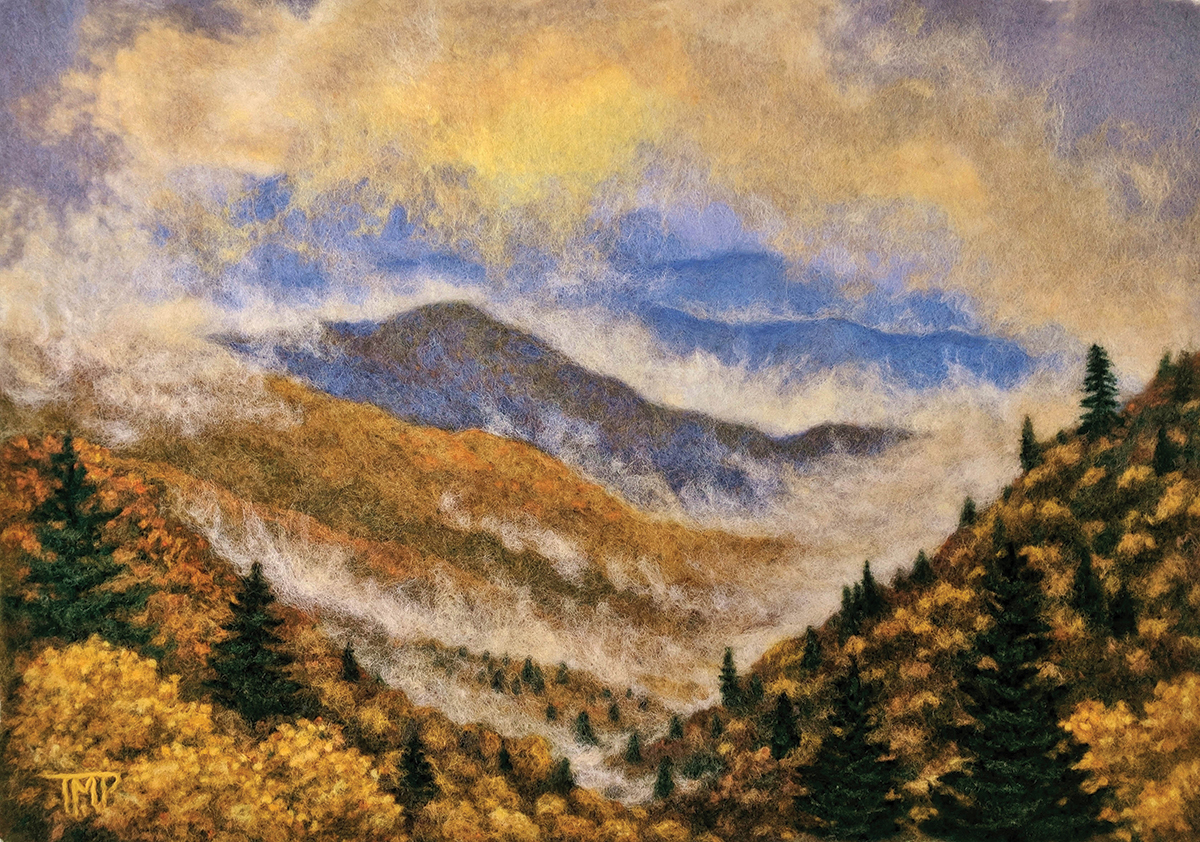
Within two years, the self-taught artist’s felt-painting skills were at such a high level that she was accepted into the prestigious Southern Highland Craft Guild. Now Palmer is so busy painting with wool that she admits, “I’d like to do a series of waterfalls, but truth be told, it’s all I can do to keep up with work for galleries and commissions.”
Palmer’s palette of wool roving hangs in her closet, organized across the color spectrum. When she can’t find the right hue or shade, she’ll mix her own, by hand. “When I paint, I go by color as much as anything,” she explains, “and I use a hand carder to mix the colors. When you card different colors of fiber together, they start to blend and make a new color.”
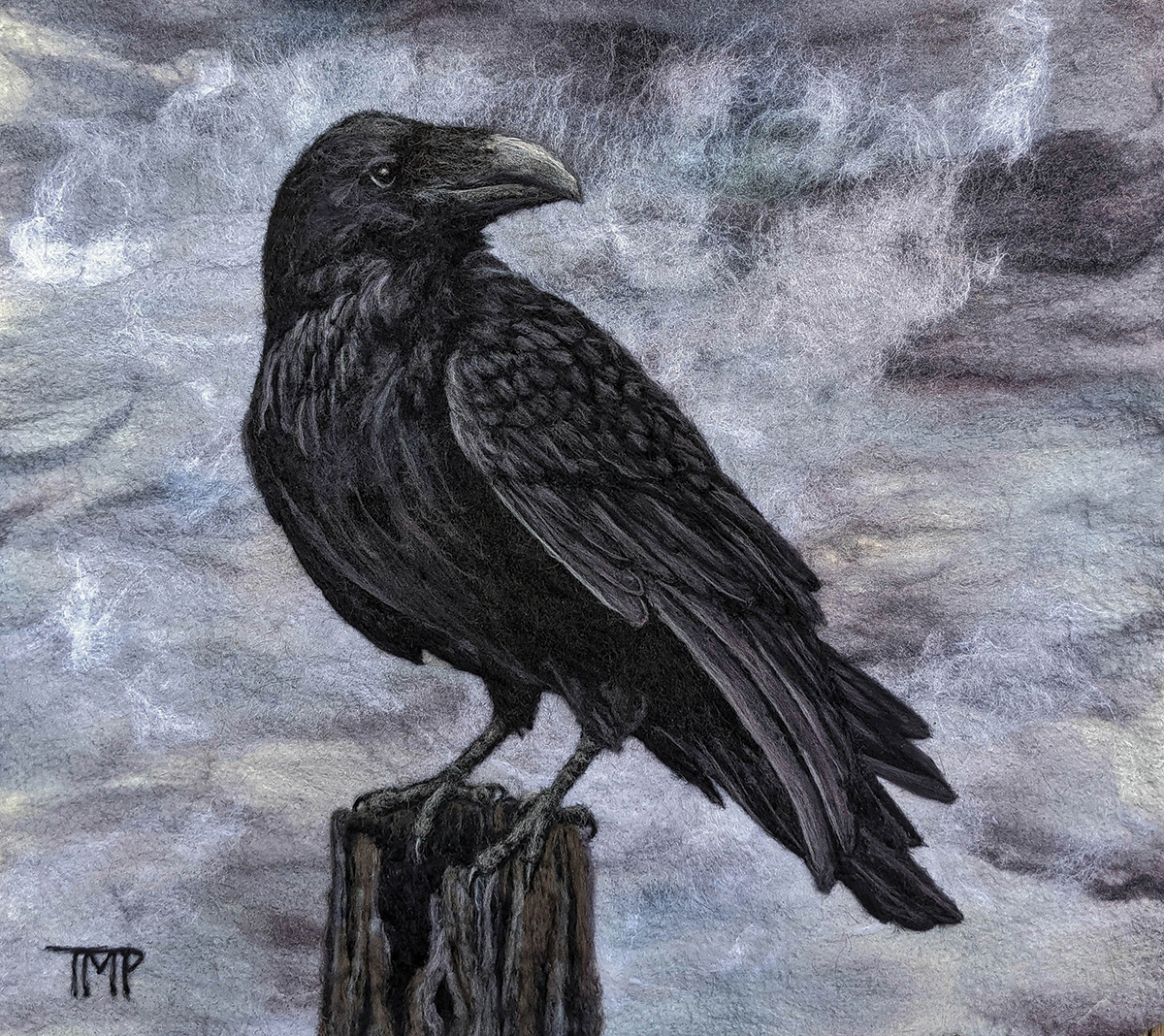
She adds, “I use a mixture of one that’s textured and one that’s soft, and batted wools are very textured, which is really good for painting leaves and rocks and tree bark. I also use a lot of Tussar silk in my waterfalls. The fibers are very fine, like a spiderweb. I pull off wispy pieces of it and then when it’s wet felted it makes little squiggles that look like water. For flowers I use nepps, which are little round balls of wool that I sprinkle into the painting, and then I wet-felt them.”
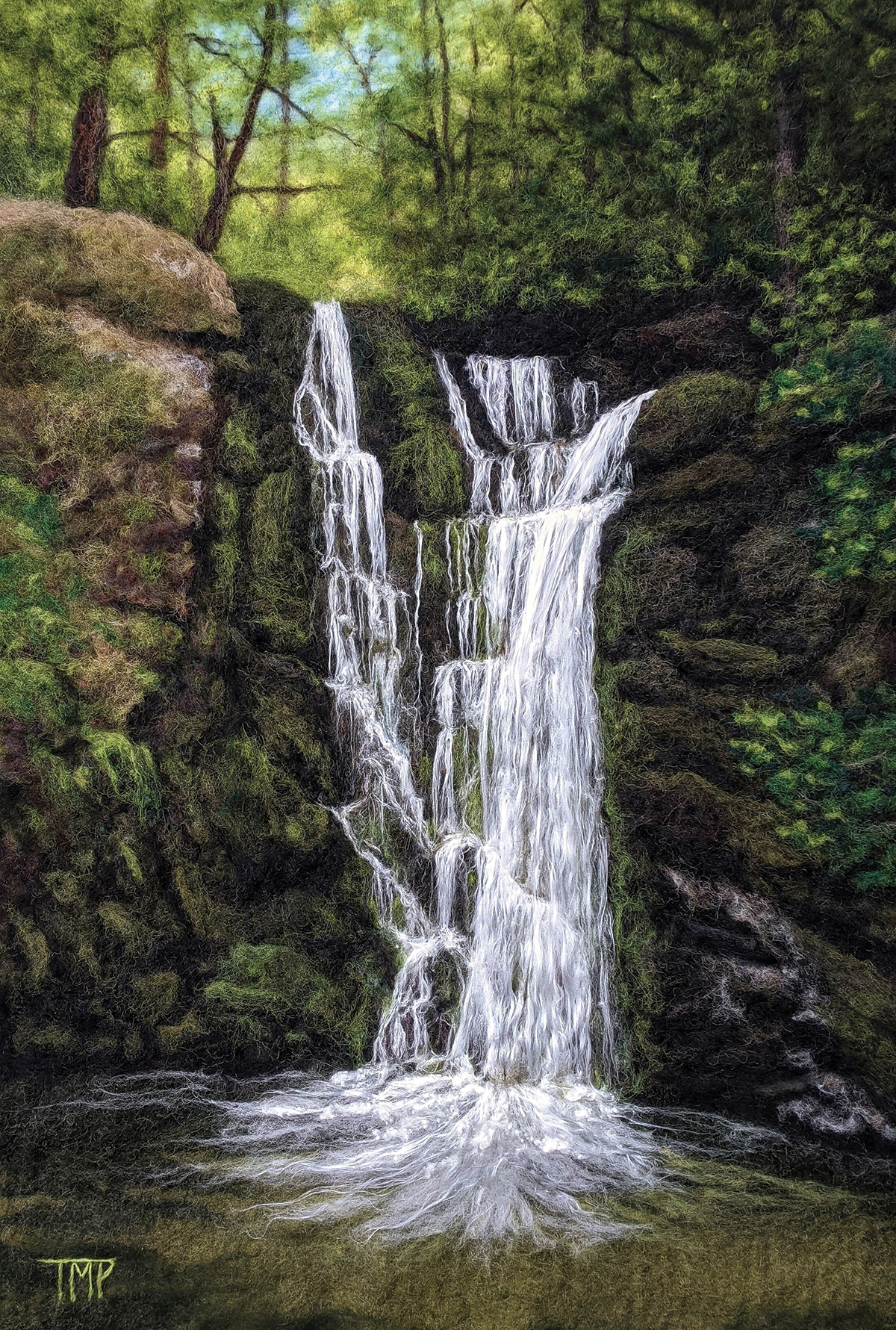
Wet felting is an ancient method for transforming wool fiber into sturdy felt, and Palmer makes all of her own felt the old-timey way, from scratch. She lays out the basic background patterns and colors to block in the composition. Next, she wets the entire piece with hot soapy water, and begins to press it with her hands and roll it with a grooved rolling pin to bind the fiber together into felt.
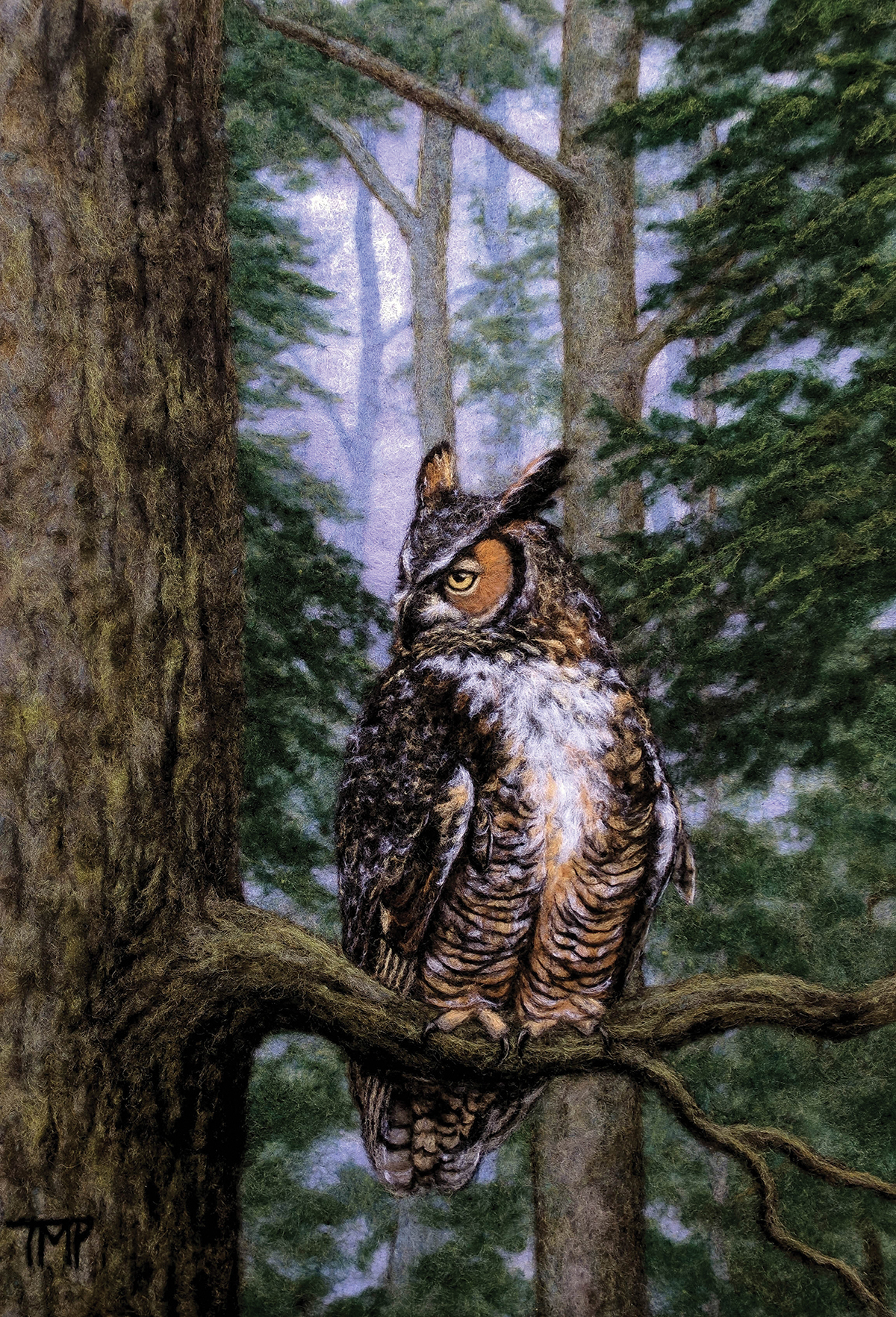
“It usually takes about three hours of standing at my kitchen counter and rolling,” she says. “It’s so physical, and I don’t know how long I’ll be able to keep doing it. I only wish I had discovered it sooner.”
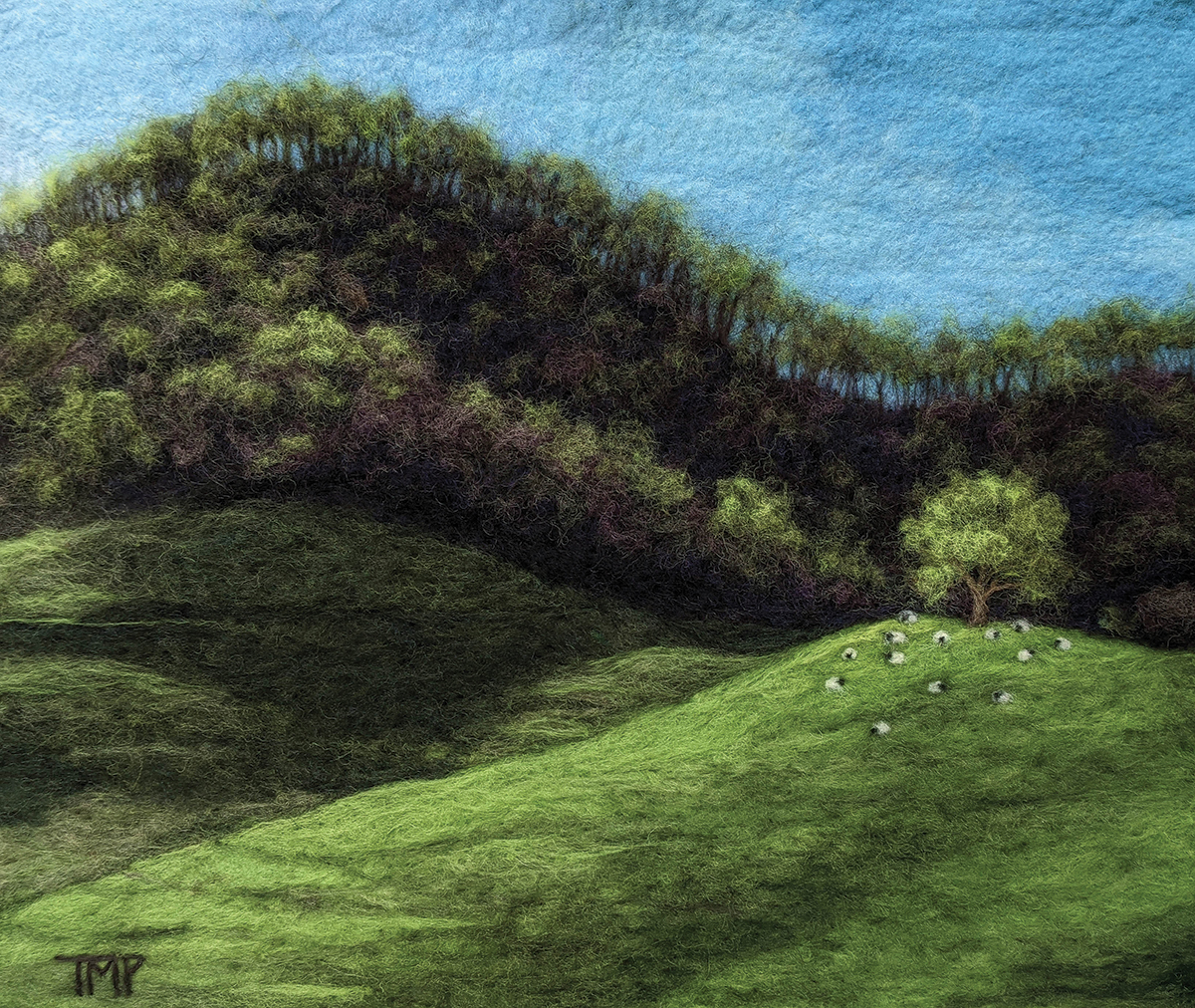
Once it’s rolled and air dried, Palmer starts needle felting the details, which is the most time-consuming part. “I can listen to two or three 10-hour audio books while I’m doing it,” she reveals, “and it takes three to four weeks to do a lot of the pieces. But people aren’t painting with wool so much, and it’s what I had been looking for, for so long — I just didn’t know it.”
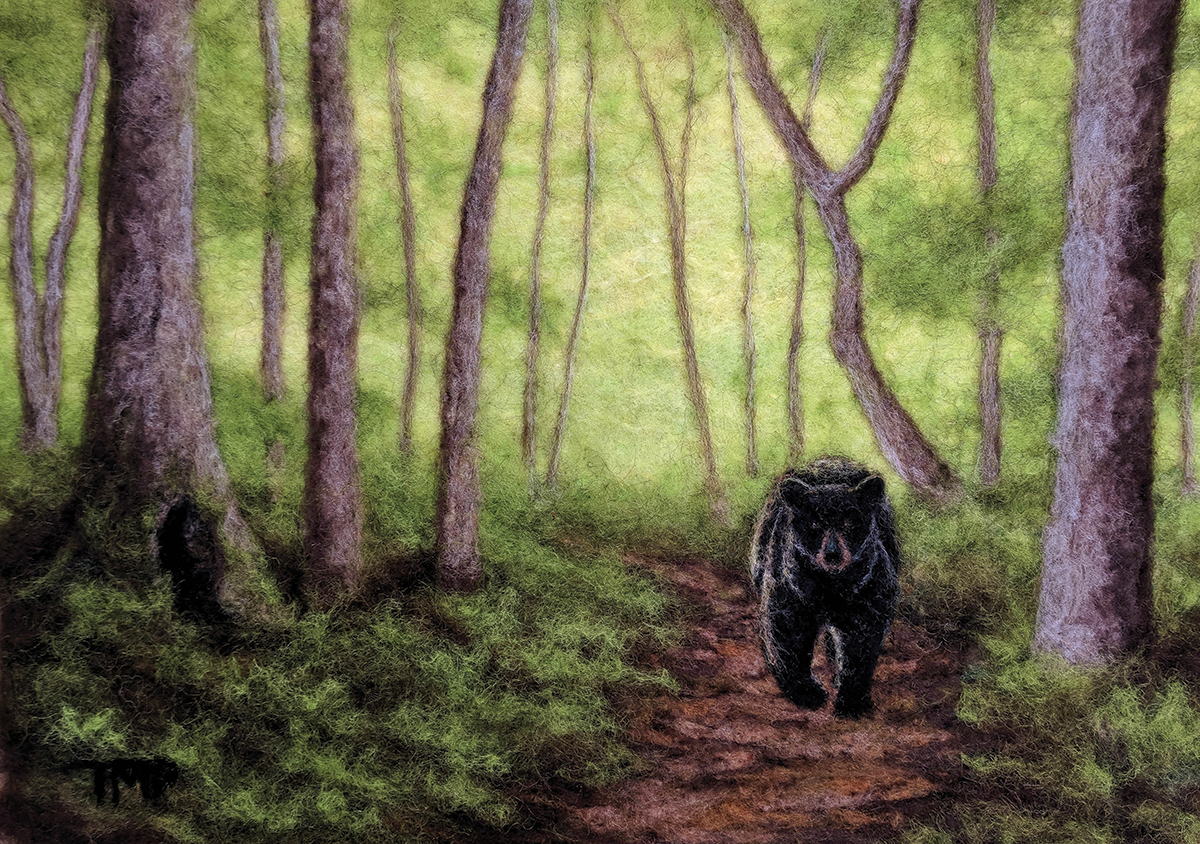
Tracey McCracken Palmer, Clyde, bonnieblinkstudio.com. Palmer is represented by Twigs & Leaves, 98 North Main St., Waynesville, 828-456-1940, twigsandleaves.com. The gallery participates in Waynesville’s “First Friday” gallery walks on Nov. 4 and Dec. 2. McCracken is a member of the Southern Highland Craft Guild and her work is carried at the Guild’s retail store at 26 Lodge St. in Biltmore Village, Asheville, 828-277-6222, southernhighlandguild.org.